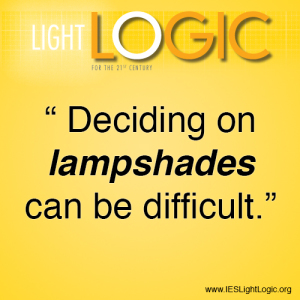Home Lighting
 Choosing the shades that will decorate your portable lamps is just as important as choosing the lamps themselves. However, deciding on lampshades can be difficult with a wide range of options to choose from – different shapes, sizes, colors, styles, and more. When choosing a lampshade, the key is considering a few key factors about your lamps. These include their height, width, and shape. In addition, you must take into account the function and context of your lamp. By going through these steps, you will be able to find the perfect shade for your lamp.
Choosing the shades that will decorate your portable lamps is just as important as choosing the lamps themselves. However, deciding on lampshades can be difficult with a wide range of options to choose from – different shapes, sizes, colors, styles, and more. When choosing a lampshade, the key is considering a few key factors about your lamps. These include their height, width, and shape. In addition, you must take into account the function and context of your lamp. By going through these steps, you will be able to find the perfect shade for your lamp.
Height and Width
The first factors to take into account when choosing a lampshade are the height and width of your lamp base. The shade should have a height that is about two-thirds that of the base of your lamp to ensure a proportional look. To determine width, measure your lamp base (straight across for round, diagonally for square) and multiply this number by two. Choose a shade that is wider than your lamp base by at least a half-inch on each side. Depending on the socket position, the end result should position the bottom of the shade at eye level of the person seated next to the lamp. This is less critical for floor lamps, which should be placed to the side and slightly to the rear of the chair so that light comes over the shoulder of the seated person.
Shade and Lamp Shape
When choosing the shape for your lampshade, it is important to coordinate it with the shape of your lamp. For example, a round base should have a round shade and an angular or square base will look better with a square shade. You should also take the table the lamp sits on into account – a square lamp on a round table could work with a round shade. For candlestick lamps, you can use nearly any shade shape.
Translucency and Pleating
Other shade options to take into consideration include translucency and pleating. Translucent shades are ideal for ambient light as well as task light for reading, while opaque shades are better for accent lighting and mood lighting. When it comes to pleating vs. smooth shades, pleats are more traditional and work well with antiques. Smooth shades are more modern and contemporary. In terms of style, a more basic body lends itself to unique shade styles and designs.
Colors and Context
Finally, the last step in choosing your lampshade involves colors and context. You should choose a lampshade that is complementary to the colors in your room. Use a bold color for a standout piece, or a neutral color if the room already has a focal point. When it comes to context, think about the space your lamp exists in. A table lamp next to your bed or in the hallway may need a smaller lampshade to conserve space.